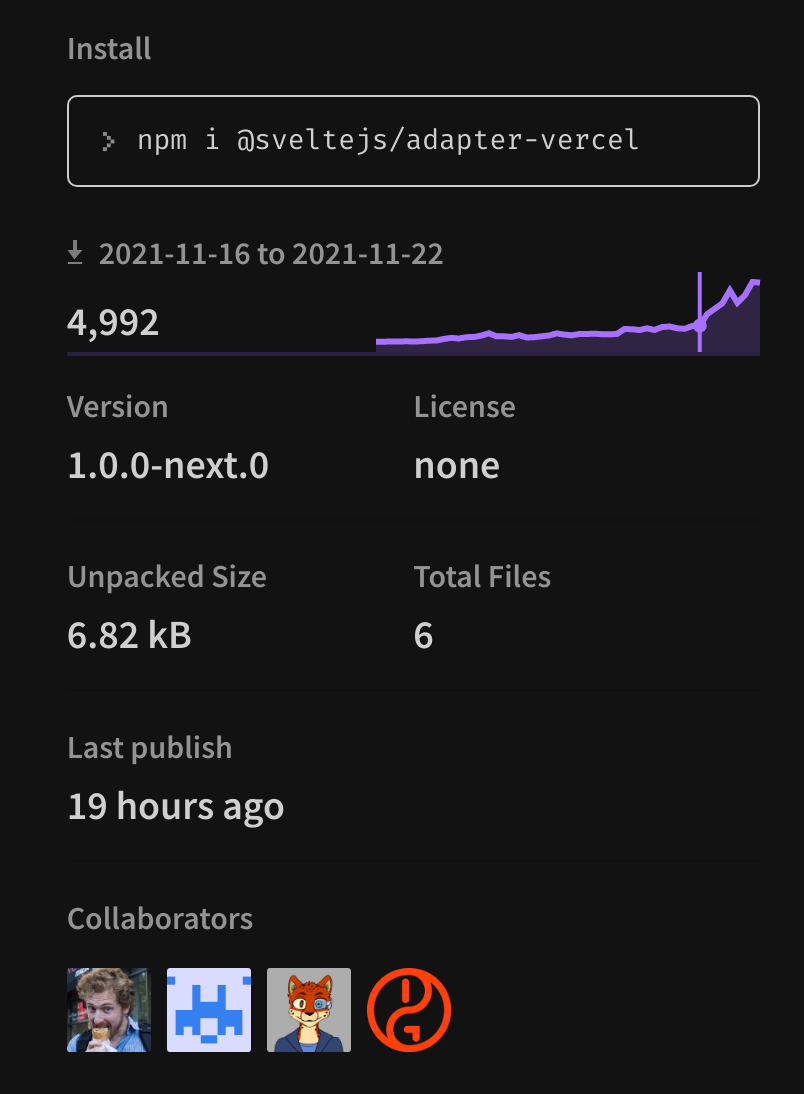The @sveltejs/adapter-vercel NPM module has seen some impressive growth over the last two months. In early November 2021 it was seeing about 4,000 weekly downloads. As of mid-January 2022 that number has climbed to over 18,000. What’s fueling the growth? Vercel’s zero-configuration deployments of SvelteKit perhaps? Nope, most certainly it was Rich Harris joining the Vercel team which was announced at the same time the adapter started taking off.

But what’s the significance? It’s just a deployment adapter right?
Well, sorta…
What the adapter represents isn’t just growth in deployments to Vercel. It represents a shift away from React. For those who knew me back in Chicago I was never a big fan of React. Even after shmoozing with the React core team over some Gelato and haram meat staples at the Facebook campus in Palo Alto a few years ago I still wasn’t sold on the idea of the Virtual DOM.
And it turns out neither was Rich, which is why we today have Svelte. And thank God for that because I was getting seriously tired of shipping 5MB JavaScript bundles just to load a widget on a page. Had the React team spent more time focused on performance and web fundamentals rather than building whizz-bang features on Facebook they most likely would’ve built something like Svelte. After all, Progressive Ajax had already been around several years at the time.
But that’s not the way things happend. And because of it much of the Web built over the last several years looks like a giant black hole to search crawlers as a result of React’s de-emphasis on web standards.
And though many thought React was the Holy Grail web developers had been searching for it turns out Rich Harris was building it by himself, or at least the initial version of it, back in the mid-2010’s. Who knew?
The Vercel adapter for SvelteKit doesn’t just represent a cool new tool or the excitement of a very talented engineer joining another team. It represents the start of the end for React and the beginning of a faster, more performant and search-friendly web for all of us. And that’s nothing to sneeze at.
